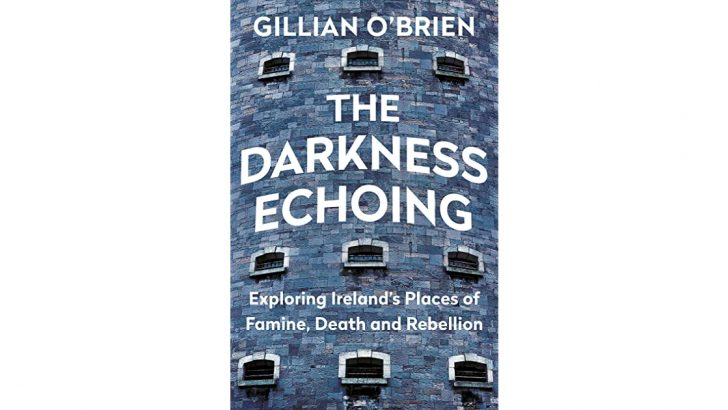The darkness echoing: exploring Ireland’s places of famine, death and rebellion
by Gillian O’Brien (Doubleday, £14.99/€17.99)
Felix M. Larkin
G.K. Chesterton said of “the great Gaels of Ireland” that “all their wars are merry and all their songs are sad”.
Thus did he highlight what Gillian O’Brien identifies as our “fascination with the morbid, the melancholic, the miserable, the maudlin (so many ‘m’ words)”.
This fascination underpins an extensive ‘dark tourism’ sector in Ireland which, with the perspective and sensitivities of a professional historian, she sets out to explore in this book.
She writes not only about places of famine, death and rebellion – as indicated in the subtitle of the volume – but also about places associated with battles, maritime disasters and emigration. Her concern always is with historical authenticity, and she deprecates both the outmoded patriotic narrative of our past that she finds propagated in some locations and the bland touristic version “peddled by those organisations desperate to lure tourists to our shores”.
She argues that “curators have an obligation to make complex history accurate, accessible and engaging”.
She raises necessary questions of propriety, most markedly in relation to the display of the human body. She rightly states that “tourism doesn’t get much darker” than the bog bodies exhibited in the National Museum – or, as she puns, the National M(a)us(ol)eum.
She points out, in addition, that the mummified bodies in the crypt in St Michan’s Church in Dublin – including that of the so-called ‘crusader’ – have been attracting visitors since the early nineteenth century and that the Medieval Mile Museum, in the former St Mary’s Church in Kilkenny, contains three skeletons unearthed during archaeological excavations in the church grounds. She wonders “what the people who once inhabited those bodies might have thought about their remains being put on public display”.
Another concern is with what she refers to as “the commodification of tragedy”, whether in the often tacky gift shops at places of ‘dark tourism’ or otherwise. Her favourite example of this is the chocolate bar on sale during the centenary of the 1916 Rising that had a wrapper showing the 1916 Proclamation and images of all seven signatories. My favourite of the items mentioned in her book is a commemorative 1916 whiskey, mischievously described by her as “a smoky blend, no doubt, complete with notes of cordite and the iron tang of blood”. This book is leavened throughout with such flashes of sardonic humour.
Undoubtedly, the jewel in the crown of Ireland’s ‘dark tourism’ is Kilmainham Gaol – which, in Dr O’Brien’s words, “occupies a unique, sanctified space in the Irish imagination and identity”.
This is largely because of the execution there of the leaders of the 1916 Rising. While the impulse behind the restoration of the jail – a private initiative in the 1960s – was to tell the story of Irish republicanism, Dr O’Brien notes that “a nuanced reflection on the history of incarceration and of all those held in Kilmainham Gaol is now told in the museum and on tours”. She reassures us that “much of the site remains as it was when prisoners were held there (or at least those held there from the 1860s onwards)”.
Ireland is, of course, not alone in having a ‘dark tourism’ sector. One has only to think of Alcatraz and Robben Islands, the Port Arthur penal colony in Tasmania and, nearer home, the battlefields, military cemeteries and other relicts of the first and second wars, scattered throughout continental Europe to realise that.
However, Dr O’Brien argues that “Irish history is full of darkness…[and] the Irish do have a perverse attraction to nurturing their injuries”. That is the backdrop to the plethora of places that she covers in her book. Those of us with an appetite – and stomach – for such things will find the book most useful in exploring these places for ourselves when we are able to travel again in the post-coronavirus era.



